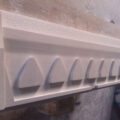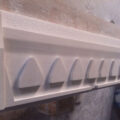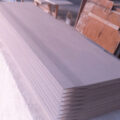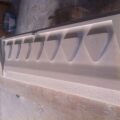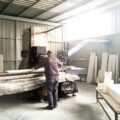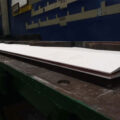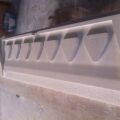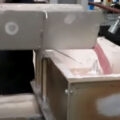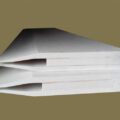By combining a pair of slender feed nozzle components with a non-corrosive cushion, a molten metal feed nozzle for a continuous roll casting machine is made. The feed nozzle members are spaced a sufficient distance apart to allow molten metal to pass through the downstream edge to engage the surface of the continuous casting roll. A cushion is fixed to the outer surface of each caster tip nozzle member along the downstream edge. The cushion includes at least an outer surface that is less aggressive than the material forming the feed nozzle member to minimize scraping of the roller. The upstream portion of the cushion pad contains a material that expands when heated, so that the outside of the pad fits the surface of the adjacent roller.
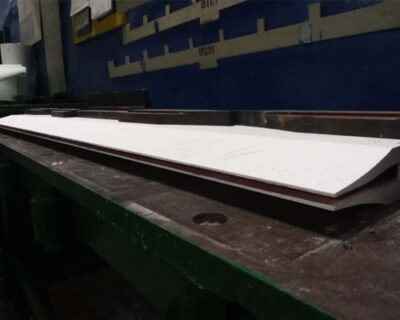
Molten metal feed nozzle for continuous casting machine has a cushion including a layer of ceramic fiber sandwiched between the top layer and the bottom layer of a glass fiber cloth. The material used for the cushion is softer than the material used to produce the feed head. It can withstand temperatures higher than 260°C (500°F); and is durable enough to maintain its original consistency during continuous operation of the continuous caster. The purpose of the cushion is to act as a medium to protect and prevent aggressive feed tip nozzles from contacting the twin caster rolls during and before continuous casting operations.
The molten metal comes out of the downstream edges of the pair of feed nozzle members, and the cross-section is enlarged to engage the surfaces of the pair of continuous casting rolls. The water-cooled continuous casting roll absorbs heat from the molten metal. Freezing occurs in a narrow area upstream of the gap between the continuous casting roll and the downstream edges of the pair of feed nozzle members. The solid metal moves downstream and passes through the gap between a pair of slowly rotating continuous casting rolls, and the thickness is reduced, and its thickness is equal to the gap between the continuous casting rolls. The continuous metal sheet leaves the pair of continuous caster rolls, opposite to the side of the pair of feeding nozzle members that feed the molten metal.
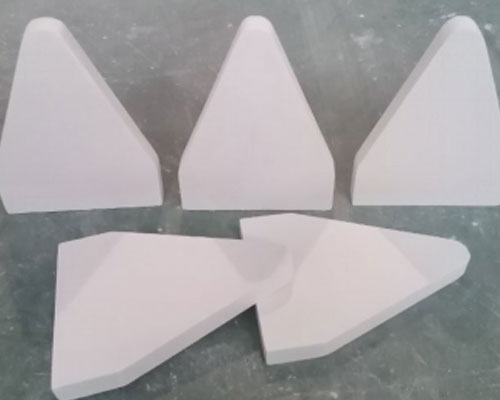
The downstream edges of the pair of feed tip nozzle members are spaced apart to provide a continuous opening extending along the length of the caster roll, the opening having a total length approximately corresponding to the desired width of the sheet being cast. The conventional flared end baffle closes the ends of the feed nozzle and helps determine the width of the plate to be cast. The width of the sheet prepared in the manufacturing operation may change from time to time, and the maximum value depends on the length of the continuous casting roll. The width is usually 11/2 to 2 meters. Therefore, the feed nozzle member is made of multiple segments, each segment typically extending 15 cm along the length of the caster roll. Therefore, a greater number of segments can be assembled to form a feed nozzle member having a desired width of a continuous caster roll.
Improvements to the continuous casting process include insulating cushions attached to the outer surface of the assembled feed nozzle member near the downstream edge. The cushion prevents direct contact between the outer surfaces of the feed, and prevents the caster rollers from being scratched by the outer surface of the feed tip nozzle member.


